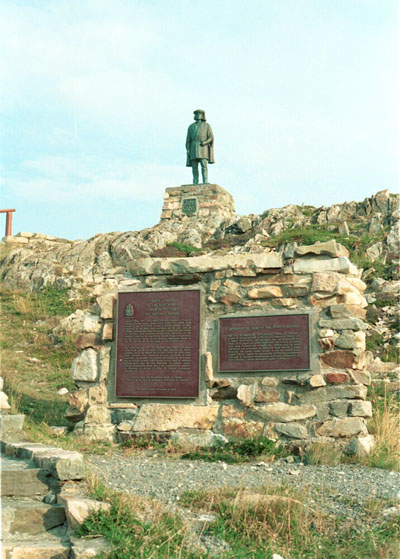Cabot's Landfall in the New World National Historic Event
Multiple plaque locations, N/A

Plaque at Cape Bonavista
(© Parks Canada Agency / Agence Parcs Canada, date unknown.)
Address :
Multiple plaque locations, N/A
Recognition Statute:
Historic Sites and Monuments Act (R.S.C., 1985, c. H-4)
Designation Date:
1958-05-27
Dates:
-
1497 to 1497
(Significant)
Other Name(s):
-
Cabot's Landfall in the New World
(Designation Name)
Importance:
Landing on June 24, 1497, beginning of British Empire overseas
Plaque(s)
Existing plaque: Cape Bonavista, Newfoundland and Labrador
Additional plaque: Bay St. Lawrence Road, Cape North, Nova Scotia
In early May, 1497, John Cabot (Giovanni Caboto), a Venetian citizen bearing letters patent from Henry VII sailed from Bristol in the MATTHEW to seek a western passage to Asia. On June 24, he made land somewhere on the east coast of Canada. Although the sources do not allow unequivocal identification of the site, local tradition records Cape Bonavista as the landfall. From this, the first official English voyage of exploration in the Western Ocean, derived Britain's subsequent claims in the New World and the beginnings of her overseas empire.